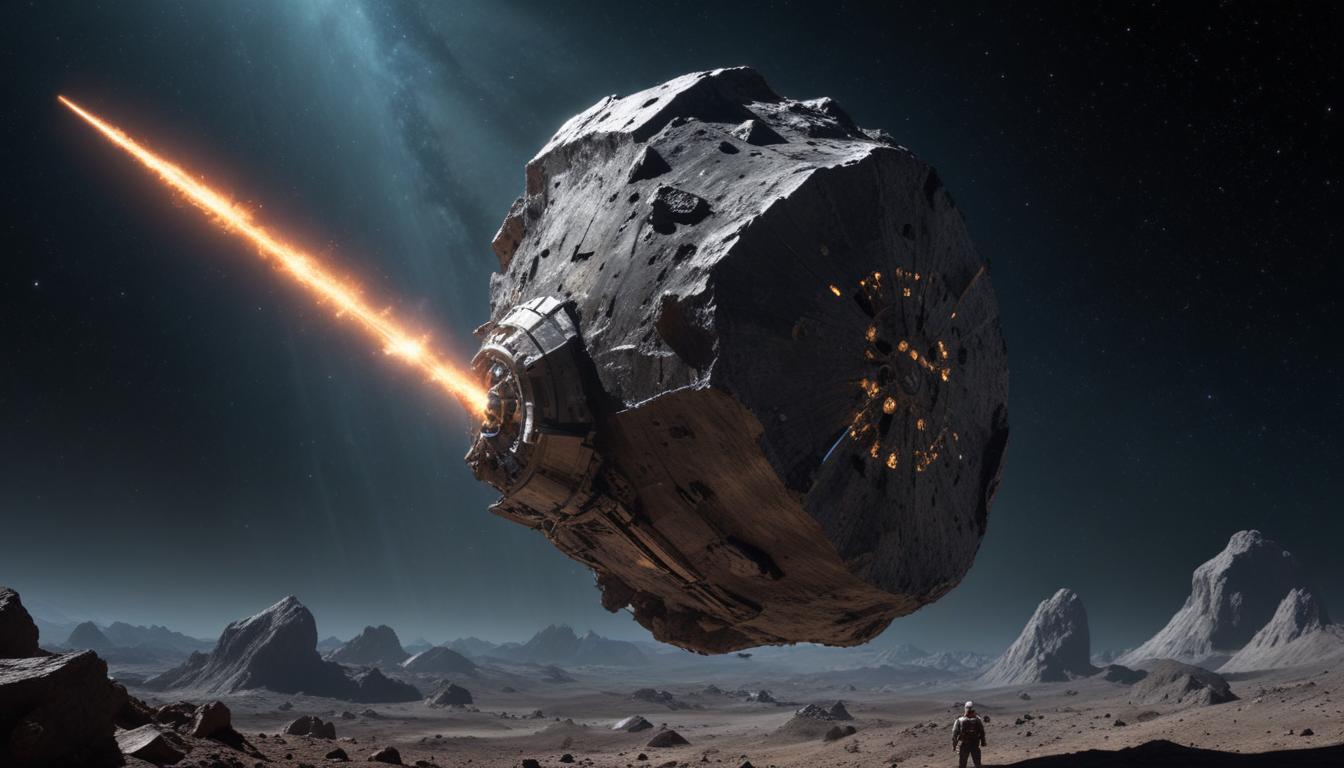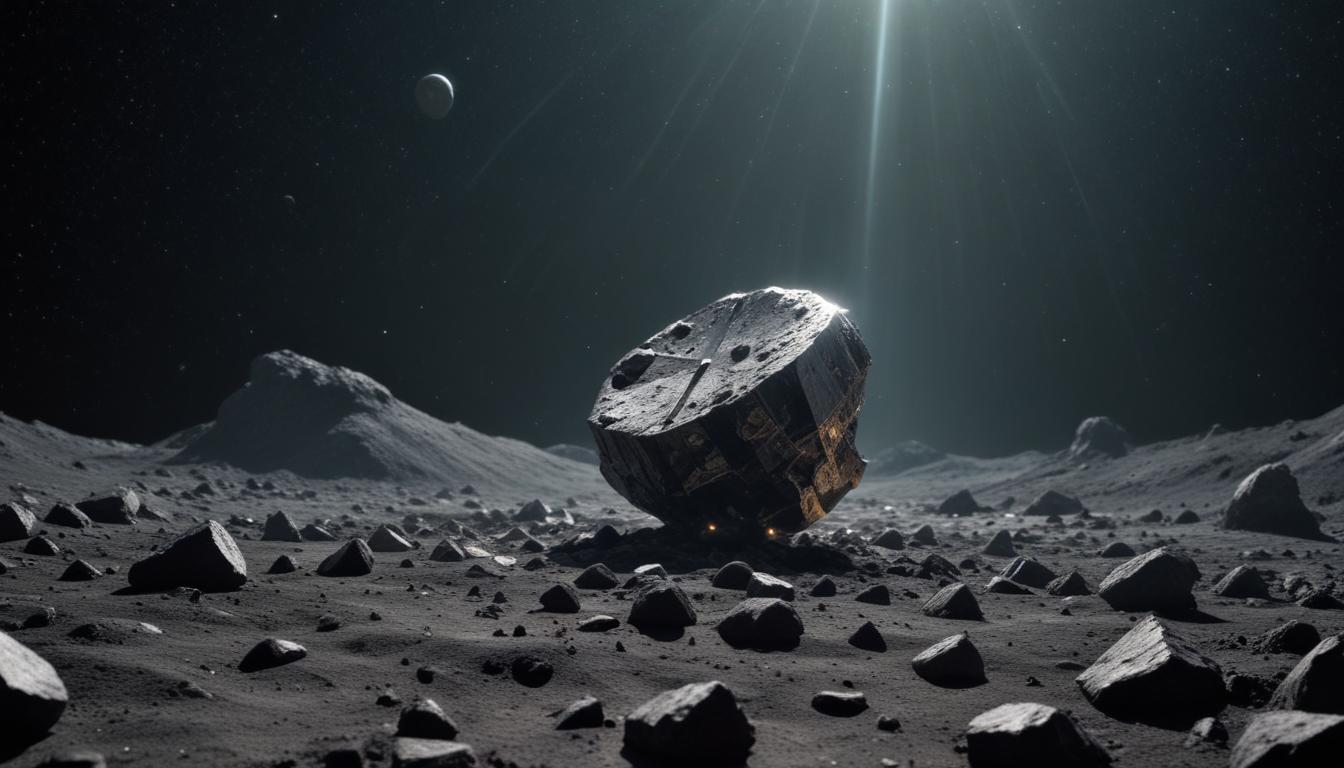Now Reading: The Trillion Dollar Asteroid Mining Race
- 01
The Trillion Dollar Asteroid Mining Race
The Trillion Dollar Asteroid Mining Race

Asteroid Mining Unlocking the Riches of the Cosmos
On our planet, a silent clock is ticking. The very materials that power our modern world—the rare metals in our smartphones, the platinum in our medical devices, and the elements essential for green technology—are finite. As global demand surges, we are rapidly depleting these precious resources. But what if the answer isn’t digging deeper into the Earth, but looking up to the stars? Welcome to the world of asteroid mining, the next great frontier for securing humanity’s future.
Why We Need to Mine Asteroids
The problem is simple resource scarcity. The elements we rely on for everything from electric car batteries to advanced electronics are becoming harder and more expensive to find. This creates economic instability and geopolitical tension. Asteroid mining offers a revolutionary solution. Instead of fighting over dwindling supplies on Earth, we can tap into a virtually limitless supply of materials floating in our own solar system.
This isn’t just about getting more gold or silver. It’s about securing the building blocks for a sustainable future. Think of the rare earth elements needed for wind turbines and solar panels, or the platinum group metals essential for creating clean hydrogen fuel. By sourcing these from asteroids, we can fuel a new age of green technology without further straining our planet.
What Treasures Do Asteroids Hold
Asteroids are far from being just boring space rocks. They are floating treasure troves of materials, often categorized into three main types.
M-type Metallic Asteroids
These are the jackpots of the cosmos. M-type asteroids are incredibly rich in metals. We’re talking about vast quantities of iron, nickel, and cobalt, along with precious metals like platinum, gold, and rhodium. A single, small M-type asteroid could contain more platinum than has ever been mined in human history.
S-type Silicaceous Asteroids
These stony asteroids are a source of more common, yet still valuable, materials. They contain large amounts of silicon, magnesium, and other minerals. These could be used for manufacturing and construction directly in space, helping to build future space stations or lunar bases without having to launch everything from Earth.
C-type Carbonaceous Asteroids
While they might not sound as exciting, C-type asteroids hold what might be the most valuable resource in space water. Water ice can be broken down into hydrogen and oxygen. This provides breathable air for astronauts and, crucially, the most efficient rocket fuel known to science. Access to water in space would create cosmic gas stations, making deep space travel cheaper and more accessible.

How Asteroid Mining Would Work
The process of mining an asteroid sounds like science fiction, but it’s based on real, developing technology. It can be broken down into a few key steps.
- Identify and Prospect First, we must find the right targets. Telescopes on Earth and in space will identify promising asteroids. Then, smaller, faster robotic probes will be sent to analyze their composition up close to confirm they hold valuable resources.
- Travel and Dock Once a target is selected, a larger mining spacecraft is launched. This craft will travel for months or years to reach the asteroid, where it will either land on its surface or dock with it.
- Extract the Resources Robotic miners will then get to work. Depending on the asteroid, this could involve drilling into its surface, scooping up loose rock, or using giant magnets to collect metallic fragments. Some plans even involve processing the materials on-site to separate the valuable elements from waste rock.
- Return the Prize The final step is bringing the goods home. The most valuable, refined materials would be sent back to Earth in small return capsules. Bulkier materials, like water or iron, might be stored in orbit for use in future space construction projects.
The Challenges We Face
The path to becoming a space-mining civilization is not without its obstacles. The enormous cost of designing, building, and launching missions is a major barrier. A single asteroid mining venture could cost billions of dollars, making it a high-risk investment.
Furthermore, the technological hurdles are immense. We need to develop fully autonomous robots that can operate for years in the harsh environment of space, with extreme temperatures and radiation, millions of miles from the nearest human technician. Finally, there are legal questions. Who owns the resources in space? International agreements like the Outer Space Treaty will need to be updated to manage this new cosmic gold rush.
A New Era of Abundance
Despite the challenges, the promise of asteroid mining is too great to ignore. It represents a fundamental shift in how we view resources—from a mindset of scarcity to one of unprecedented abundance. By unlocking the riches of the cosmos, we can not only power our world for centuries to come but also pave the way for humanity’s expansion into the solar system. The journey will be difficult, but the future of our planet may just be written in the stars.


































